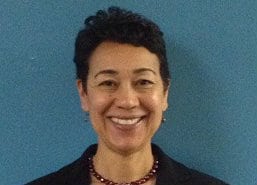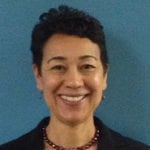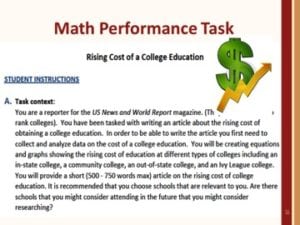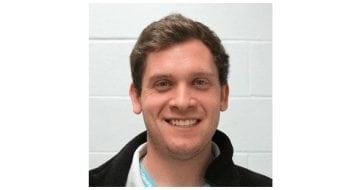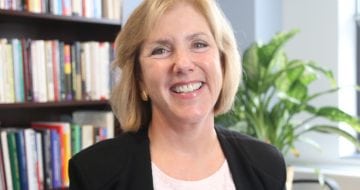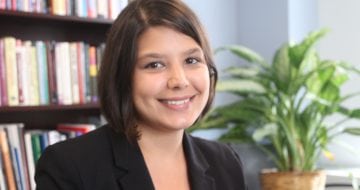This post is part one in our Every Student Succeeds Act (ESSA) blog series.
Students need higher-order thinking skills, yet most assessments ask few questions that require higher-order thinking. Linda Darling-Hammond’s observation at a recent AYPF forum on Accountability Reimagined resonated with me as I thought about the assessments I’d taken during elementary, middle and high school. For the most part, rote learning was encouraged and those who could memorize the most fared the best on tests that emphasized recall. Filling in bubbles on multiple choice tests was another way to “assess” learning – but many times this devolved to randomly picking a circle and coloring it in (with the added bonus of creating a fun pattern!). More specifically, I thought about my math career. While I did take “higher level” mathematics, too often I was simply memorizing mathematical theorems, with limited successful application to anything in the real world. By the end of high school, I was mostly ready to be done with math, and this stymied progress on a computer science course in later years at university as I needed Math 1 to proceed. Do any of these math travails sound painfully familiar?
I could not believe that, emerging from the forum featuring Linda and Paul Leather, the Deputy Commissioner in New Hampshire’s Department of Education, I would actually wish for a return to exploring math and using some of the newer assessments they shared. What do they look like? (And would you also be seduced into wanting to solve these challenges?)
Here is an example Linda shared of an Algebra 1 performance task developed for grades 9 and 10:*
In this task, students have an opportunity to assume the role of reporter and use their investigative skills to research four different institutions of higher education. They have to collect and analyze data, develop equations, then write an article about college affordability – and all of this could be connected to schools they might actually attend. The task focuses on meaningful application to a real-world challenge with immediate applicability to students’ (and no doubt parents’!) interests and concerns.
Paul shared an example of the innovative assessments being used in some of New Hampshire’s pilot districts, where they are using the Performance Assessment of Competency Education (PACE), an alternative route for demonstrating measurable progress in student outcomes. As Paul prefaced, “New Hampshire sought deeper assessments, greater student engagement, and increased educator ownership in accountability.” This is evident in one of the locally constructed tasks developed by math teachers on assessing students’ geometry knowledge. The assessment asks students to assume the role of town planner, consider their town’s future water needs, and devise a proposal to add a water tower somewhere on town property that would be capable of holding 45,000 ± 2,000 cubic feet of water. In addition, this structure would need to contain the most amount of water while using the least amount of construction material. Students have to prepare a proposal that can be submitted to the town planning committee.
This kind of assessment is certainly light years away from the lower-order thinking skills of rote learning and filling in bubbles. It requires that students conduct research in many arenas and develop a solution that involves applying mathematical principles to an existing problem in their immediate environment.
These were just a few examples our presenters shared as they urged us to consider that, as Linda noted, the explosion of new knowledge and technology requires re-thinking of schools – and reconsidering how we think about student success, how to keep them engaged in their learning, and how to provide high quality opportunities for learning.
The good news? The recently-enacted Every Student Succeeds Act (ESSA) is encouraging multiple types of assessments, including portfolios and projects, and these kinds of assessments are thus possible for many more students. Innovative districts in states such as the Innovation Lab Network are already using multiple measures of assessing student learning. This is critical at a time when employers are actively seeking students who can learn how to learn, problem solve, work in teams, and communicate effectively.
More troubling: The majority of tests currently used in the United States still examine fairly routine and/or low-level skills, with limited opportunities for students to apply their learning to real-world situations. The advent of assessment systems such as the Partnership for Assessment of Readiness for College and Careers (PARCC) and the Smarter Balanced Assessment Consortium are a step in the right direction, but we need to ensure that the development of higher-order thinking skills is a priority in each and every school.
At present we have a very real opportunity to think differently about providing students with challenging tasks, measuring their learning in multiple ways, and making what they learn about as meaningful to them as possible. Who knows what my math journey might have looked like if I had had these innovative kinds of challenges to solve!
*The task can be found in The Performance Assessment Resource Bank, a project of the Stanford Center for Assessment, Learning, and Equity (SCALE) and the Stanford Center for Opportunity Policy in Education (SCOPE) in collaboration with the Council of Chief State School Officers’ (CCSSO) Innovation Lab Network.
Loretta Goodwin is a Senior Director at the American Youth Policy Forum.


